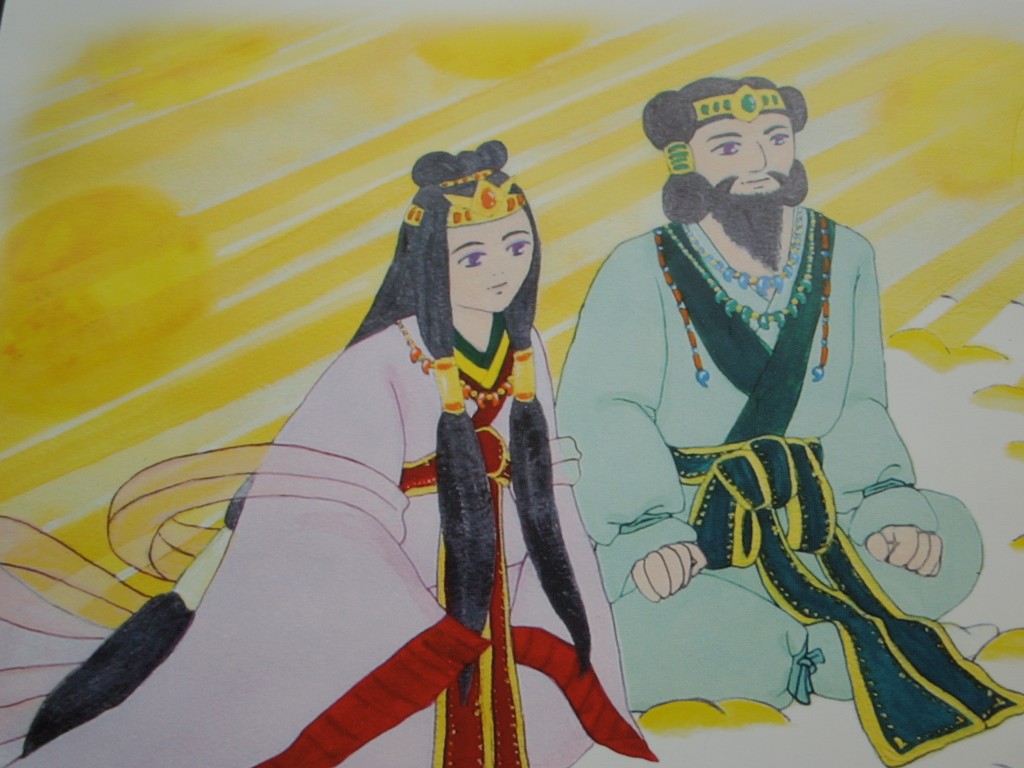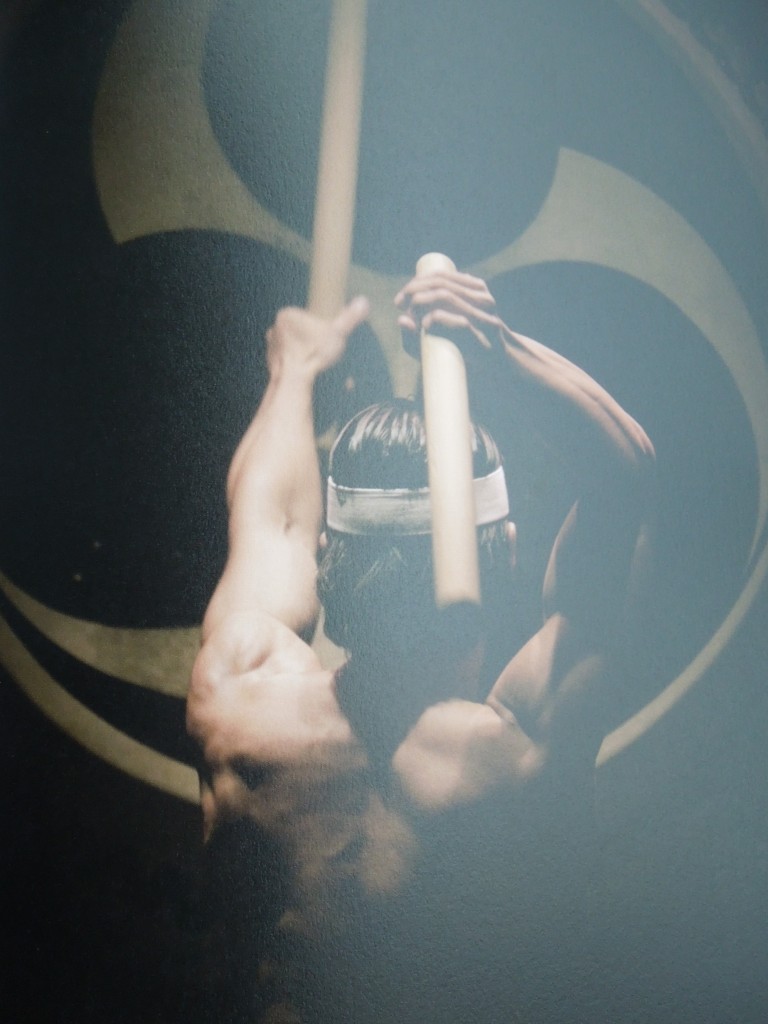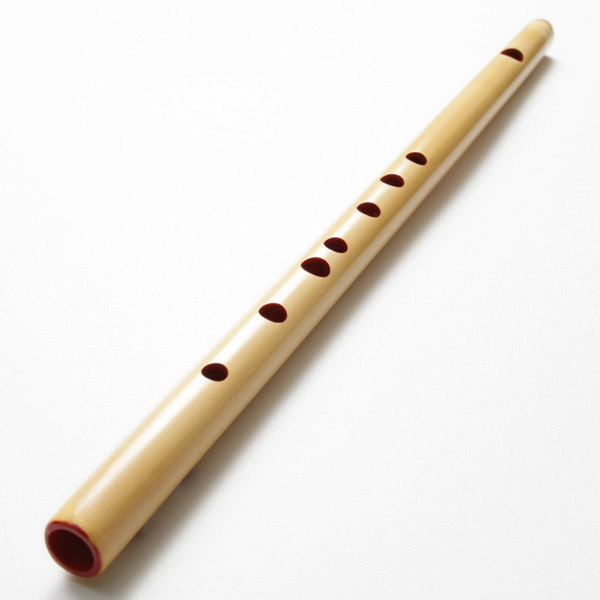
Izanagi and Izanami, creators of Japan according to the Kojiki mythology
Bamboo flute musician Tosha borrows from the modern to teach traditional tranquility
BY SEI DICKINSON Japan Times JUL 15, 2014
Music changes from generation to generation, which is as true in Japan as it is everywhere else. But how can traditional music manage to keep itself from being forgotten? Shinobue (bamboo flute) musician Kisho Tosha is trying to find an answer to this question. “It’s sad that kids don’t know about, or have much interest in, the culture of their own country,” he says.
Tosha is trying to connect with younger music fans by mixing traditional and modern sounds via collaborations with more modern musicians — and he’s getting positive results. He says that after collaborating with DJ Kentaro at a show, he was surprised by the audience’s response. People told him they had no idea the shinobue could sound so “intense” or “rock.”
 Tosha says he achieves such intensity by using classical techniques as a base for his performances. Not solely focusing on the music, though, he also emphasizes visual presentation through dancing and dialogue. The result produces energetic moments that can just as easily slip into a moment of calm.
Tosha says he achieves such intensity by using classical techniques as a base for his performances. Not solely focusing on the music, though, he also emphasizes visual presentation through dancing and dialogue. The result produces energetic moments that can just as easily slip into a moment of calm.
This is likely what he’ll bring to the upcoming “Sakimitama-Kushimitama: From Kojiki” event, which consists of a Japanese oratorio featuring text from the ancient Kojiki (712) rewritten to make it understandable to younger listeners. “Japanese youth are likely to get bored if they don’t understand the lyrics,” Tosha admits.
The Kojiki (“Records of Ancient Matters”) is a manuscript from the early eighth century that details the creation myths of Japan and its gods. “Kojiki is an origin story for the Japanese people,” Tosha says. “Even when arranging it in a modern way, the themes are still old ones.”
The musician hopes that in making the Kojiki more accessible, Japanese people will get a sense of their heritage and tap into its tranquillity.
The Sakimitama-Kushimitama event will also feature a dance performance by Kikunojo Onoe, the fourth headmaster of the Onoe School of Dance, as well as other dancers and musicians. The lyrics to the contemporary Kojiki have been written by Takashi Matsumoto, a former member of the popular 1970s band Happy End, who now writes lyrics for pop groups such as Kinki Kids.
*******************************************
For an exciting nine-minute video of the performance, with taiko, full orchestra and vocals, see this youtube video. The production reminds me of a Kabuki version of Amaterasu I saw last year starring Bando Tamasaburo.
“Sakimitama-Kushimitama: From Kojiki” takes place at Kioi Hall in Chiyoda-ku, Tokyo, on July 23 (3 p.m. and 7 p.m. starts; ¥6,000 for S rank seats, ¥5,000 for A rank seats and ¥2,000 for students). For more information, visit www.mukeibunka.com/#sakimitama.


Leave a Reply